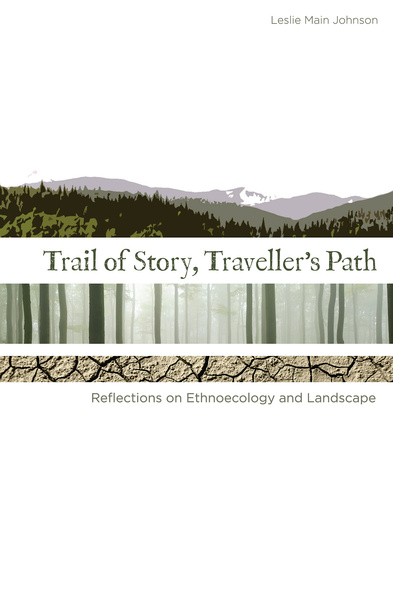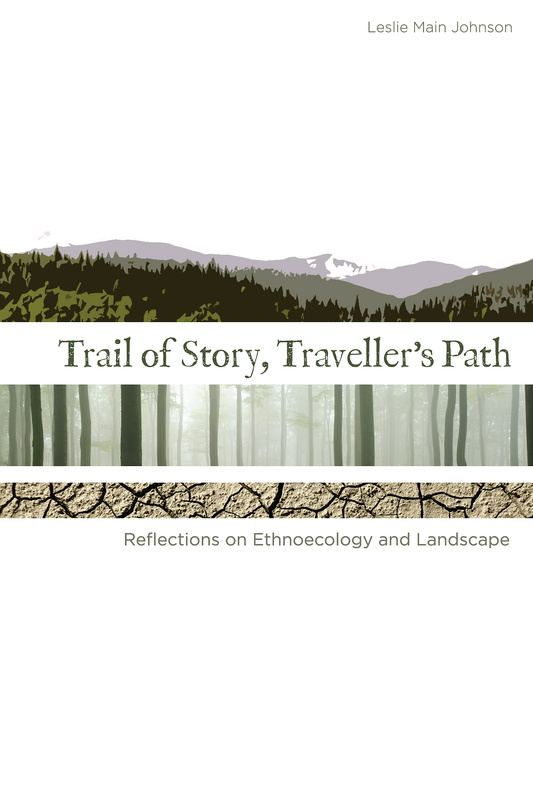
Trail of Story, Travellers’ Path
Reflections on Ethnoecology and Landscape
Trail of Story, Traveller’s Path examines the meaning of landscape, drawn from Leslie Main Johnson’s rich experience with diverse environments and peoples, including the Gitksan and Witsuwit’en of northwestern British Columbia, the Kaska Dene of the southern Yukon, and the Gwich’in of the Mackenzie Delta.
With passion and conviction, Johnson maintains that our response to our environment shapes our culture, determines our lifestyle, defines our identity, and sets the tone for our relationships and economies. She documents the landscape and contrasts the ecological relationships with land of First Nations peoples to those of non-indigenous scientists. The result is an absorbing study of local knowledge of place and a broad exploration of the meaning of landscape.
Leslie Main Johnson is an associate professor inthe Centre for Work and Community Studies and the Centre for IntegratedStudies at Athabasca University. She is a co-editor, with Eugene S.Hunn, of Landscape Ethnoecology: Concepts of Physical and BioticSpace.
CHAPTER 1: Trails and Visions: Reflections on Ethnoecology,Landscape, and Knowing
CHAPTER 2: Landscape Ethnoecology: Nexus of People, Land, andLifeways
CHAPTER 3: Trail of Story: Gitksan Understanding of Land andPlace
CHAPTER 4: Traveller’s Path: Witsuwit’en Knowledge ofthe Land
CHAPTER 5: Of Berry Patches: What Makes a Kind of Place?
CHAPTER 6: Lookouts, Moose Licks, and Fish Lakes: Considering KaskaUnderstanding of the Land
CHAPTER 7: Envisioning Ethnoecology: Movement through Place andSeason
CHAPTER 8: A Gwich’in Year on the Land
CHAPTER 9: Of Nets and Nodes: Reflections on Dene Ethnoecology andLandscape
CHAPTER 10: Of Named Places
CHAPTER 11: Trails versus Polygons: Contrasting Visions of theLand
CHAPTER 12: Implications: GIS and the Storied Landscape
CHAPTER 13: The Ecology of Knowing the Land





